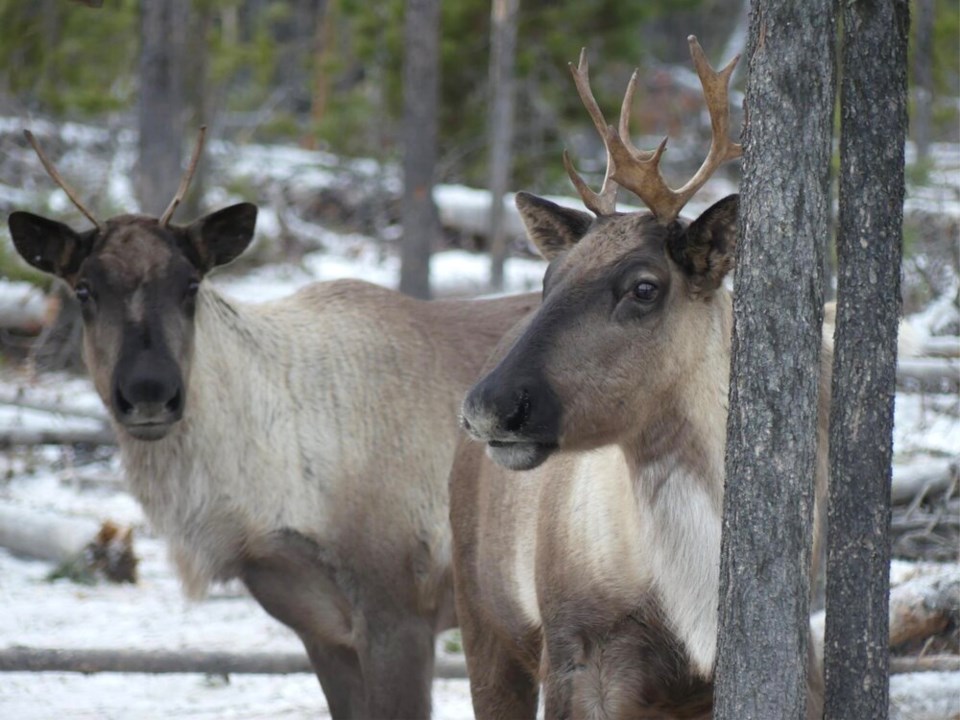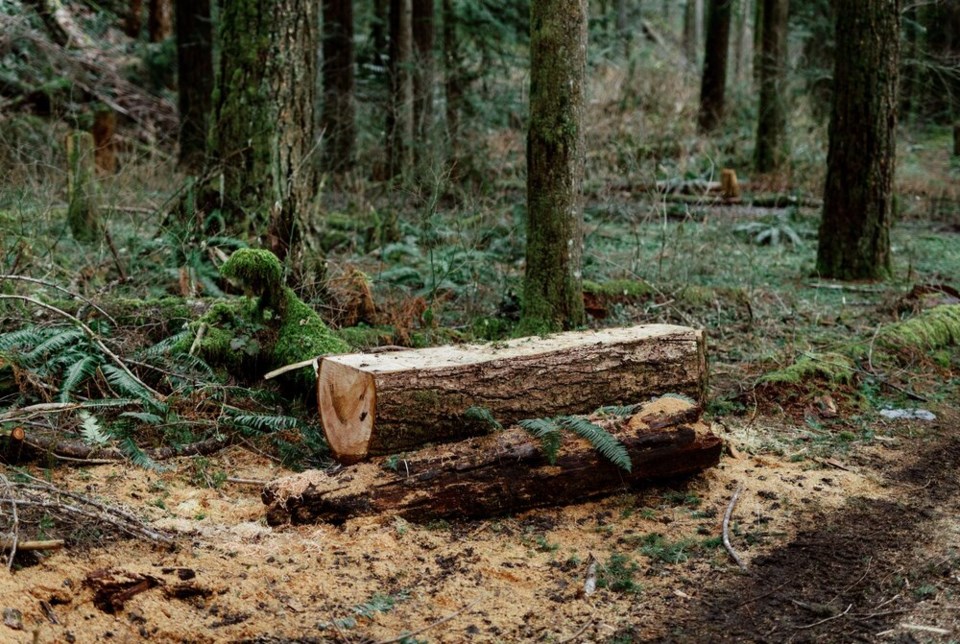The B.C. government claims it protects nearly 20 per cent of the province's land base as sanctuaries for biodiversity, but a new report says it has abused a key designation to “falsely inflate” its progress.
The report, which was jointly produced between the environmental law group Ecojustice and the B.C. chapter of the Canadian Parks and Wilderness Society, examined Old Growth Management Areas, Wildlife Habitat Areas, and Wildland Zones. Together, they account for nearly all of what the province claims as “other conserved” areas, a designation B.C. uses more than any other province in Canada.
That means that 20 per cent of all the land the B.C. government claims to protect is at risk from some combination of logging, oil and gas exploration or road building, says Tori Ball, acting terrestrial conservation manager with Canadian Parks and Wilderness Society BC.
“A protected area is meant to have an aspect of permanence to it,” Ball told Glacier Media. “The areas that B.C. has claimed under that don’t prohibit industrial activity.”
“We see old-growth areas that can easily have borders redrawn.”
In an email, a spokesperson for the Ministry of the Environment and Climate Change Strategy did not confirm or deny whether the report’s claims had merit.
“B.C. continues to lead the country with the highest percentage of protected and conserved areas of all provinces and territories, and continues to explore additional areas for conservation purposes,” wrote a spokesperson.
COUNTING CONSERVATION NEEDS COMMON METRICS
As a catch-all category to make protected areas more inclusive, “other conserved” areas (also known as 'other effective conservation measures' or OECMs) were first put forward as an alternative to traditional conserved areas, such as parks, at the United Nations Conference of the Parties in 2010.
By 2020, Canada’s federal government had used the designation to protect at least 17 per cent of inland waterways and 10 per cent of marine areas.
But Ottawa has ambitious conservation targets, which echo global calls to protect biodiversity before its trampled by a changing climate and direct human influence.
If the federal government wants to meet its goal of protecting 30 per cent of the country’s lands and waters by 2030, it will need support from all the provinces and territories, says the report.
By flouting the standards of the “other conserved” areas, the report says B.C. is lowering the baseline for other jurisdictions and tempting others to follow suit.
“The goal of the benchmarks is to conserve biodiversity. We aren’t going to be able to do that if we count differently,” Ball said.
Such “false accounting” also detracts from supporting Indigenous-led conservation, the primary route to achieve the federal conservation targets, says Ball.
‘PROTECTED’ AREAS WORK
Recent research out of the University of British Columbia has shown long pursued policies that assume protected areas help wildlife is working. Designating an area as “protected,” found scientists, is the best single thing you can do to safeguard mammal diversity.
“Climate change and biodiversity loss are interlinked crises,” said Ball. “Protected areas do act as carbon sinks, they provide a number of benefits to us from mental health and providing clean air and water to habitat for wildlife.”
“By going forward and protecting more land and achieving 25 per cent by 2025 and 30 per cent by 2030, we’ll be able to combat both at the same time.”
For Greg Utzig, an agrologist and conservation ecologist who helped build the first biogeoclimatic maps of the province, such targets are a long time coming. He spent much of the 1990s working to ramp up the proportion of protected areas in B.C.
In the 1980s, he says only about six per cent of the province was fully protected. That climbed to 12 per cent by the year 2000, and according to the Ecojustice and CPAWS-BC report, now sits at a little over 15 per cent.
Utzig agrees none of the areas designated by the province as “other conserved” live up to their name and "shouldn’t count toward that at all.”
As for what’s left of old-growth stands in the province, protecting them means protecting a genetic legacy that can go back 1,000 years. As climate changes, their presence could offer crucial adaptations that allow species to survive.
The province has committed to pursuing a paradigm shift in how it manages forests, and last fall, announced it would move to defer logging across much of B.C.'s old-growth forests.
But according to Rachel Holt, a Nelson-based independent forestry ecologist and member of B.C.'s old-growth technical advisory panel, the government has taken no real action to implement the recommendations in the independent Old-Growth Strategic Review.
The document, submitted to the government nearly two years ago, calls on the province to shift its forestry management practices to one that prioritizes safeguarding biodiversity and ecosystems instead of protecting the interests of industrial extraction.
“We haven’t done anything about it yet,” said Holt. “If we want to prevent a biodiversity and climate crisis seriously, we need to do this.”
Or as Utzig put it: “We need some areas where we haven’t screwed anything up so we can see how nature is coping with these changes.”

Quality matters, and protecting thousands of square kilometres of rocky mountain tops, where there is little ecological diversity, does little good, says Utzig. That's why, he says, many of his colleagues are suggesting jurisdictions like B.C. need to move to protect 50 per cent of its land and waters.
“Nature needs half because right now we’re beginning to move into the sixth extinction. It’s an issue here too,” said Utzig.
Remove the trees and you remove an entire life-support system, said Holt. The knock-on effects can be seen in the ranges of several key species, which have already been contracting across the province, she told Glacier Media.
Near Holt’s home in Nelson, once native caribou herds have disappeared as their territory shrinks in the face of industrial and recreational activity. But even experts have a hard time accounting for other important species, such as the bees and other insects, that get washed away with soil after an area is logged.
“Biodiversity holds the soil together,” she said. “There are hundreds and hundreds of species — many of which we don’t know — that we lose when we lose the soil.”
All of those effects will inevitably trickle down to human populations. Like wetlands, forest soil acts as an important filter for municipal and rural water systems across British Columbia.
“There is kind of nowhere out. We cannot run this ecosystem down and think we’ll have a water supply,” Holt said.
CALL TO SCRAP OR UPGRADE 'FALSELY' PROTECTED AREAS
The report calls on the B.C. government to either scrap the “other conserved” designation, so it's not misrepresenting how much land is under protection, or upgrade the protection of the areas to meet Canadian and international standards.
“We’re trying to draw up solutions-based discussions,” said Ball, pointing to provincial protected areas, conservancies and Indigenous Protected and Conserved Areas.
In the meantime, a spokesperson for the Ministry of the Environment and Climate Change Strategy said it’s working with the federal government to develop a “bilateral Nature Agreement” to “strengthen conservation provincewide.”
The ministry is meeting with CPAWS and Ecojustice later this year to discuss their report and review OECMs, said the spokesperson.



